David Allen describes the difference between what you’ll find on a next action list and a to do list:
90+ % of the to do lists I’ve seen are incomplete inventories of still-unclear things. The Next Action definition (if you’re really getting down to having no ambiguity about the next visible physical activity required to move something forward), actually finishes the thinking you’ve implicitly agreed with yourself that you’ll do. “Mom” is an unclarified to do item. But when “Mom” is translated into “Celebrate Mom’s birthday with a party” as a project outcome, then “Call Sis about what we should do for Mom’s birthday” is a clear next action. Because “Mom” is vague, it still triggers stress when you look at it on a list. “Call Sis . . . ” triggers action and positive engagement.


Very helpful definition. And it made me think of that Beatles song Your Mother Should Know (about GTD).
@Kevin, ahahah :-)
My mother does!! ;)
For me, a To-Do list (typically a hand-drawn quickie mind-map) is my simple cross-reference to a specific action within one of my categories (@Home, @Computer).
It’s my way of fast-tracking my conscious awareness of a Next Action that’s needing attention, quickly highlighting something out of the other items within the Category.
In other words, I don’t have separate To-Do lists that have not already been collected and processed into my trusted system. I’ve tried this and it doesn’t work! – this degrades from the trusted system concept.
What I’ve found is that ad hoc interruptions play mind-games with completion of my hand-picked To-Do lists, so I invariably fall back to my full inventory of categorized items anyway. For me, pure GTD is not about To-Do lists, so I use them in perspective.
The To-Do list is useful for me as a portable device (scrap letter-size paper, hand cut into squares), for running about when I can’t take my laptop.
Hope that helped someone.
Yes, just one thing Paul. What on earth are you on about?!